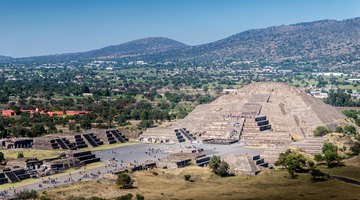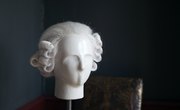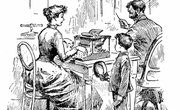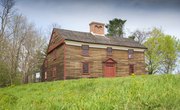What Inventions Did the Aztecs Make?
The Aztecs are credited with a number of inventions, but in reality, most of their "inventions" were already well-known in Central America and Mexico. It's more accurate to say the Aztecs popularized inventions such as popcorn and chewing gum by introducing them to the Spanish conquerors. However, there are a few inventions that people of Aztec descent can claim as their own.
Aztec inventions came from a range of societies like the Maya, Inca, Tenochtitlan, Nahuatl, and the Zapotec, which are all considered Mesoamerican groups from Mesoamerica areas like the Valley of Mexico, Mexico City, and the city of Tenochtitlan, that were later picked up by Mexicans and Spaniards. World history allows us to see how many of the tools and gadgets we use today came to be in the new world. The Aztecs are labeled as the makers of the modern number system, rubber balls, headdresses, floating gardens, calendars after the Aztec calendar, chinampas or aqueducts, and ballgames. Aztec technology, Aztec society and Aztec people as a whole allowed us to now be able to utilize our natural resources to our best ability.
Mandatory Education
The Aztec empire was one of the few in the world to implement mandatory education. Many of the other contemporary civilizations had education for the upper classes, but Aztec education was for everyone, regardless of gender, rank or station. Schools were segregated, however.
There were three different schools--one school was for girls and two schools were for boys. Girls learned about religion, along with domestic skills such as how to cook, sew, weave and care for children. Upper class boys went to a school for nobles and the wealthy. These boys learned law, medicine, writing, engineering and building. There was also instruction in less tangible skills, such as interpretation of dreams and omens. Other classes concerned Aztec history and religion. Historians believe this was a tough school and that the boys were humiliated to make them resilient.
By comparison, the school for commoners was more relaxed. Its purpose was to raise warriors and farmers. Boys were still required to sleep under thin blankets and eat hard bread, but that was the limit of their hardship. They shared common instruction with their noble colleagues in history, religion, etiquette and important rituals. All of the schools include song and dance in their curriculum. This art was an important part of the Aztec religious festivals.
Chocolate
The Aztecs and Mayans take credit for introducing chocolate to the world. In Mayan culture, chocolate was so important it was used as currency. The Aztecs use the cacao bean to make xocoatl (bitter water), similar to a brew prepared by the Mayans. This hot chocolate beverage was popular with the upper class and was concocted out of cacao beans, corn flour, water and chilies. Xocoatl would serve as the foundation for a number of other hot chocolate drinks. The Spanish would introduce sugar as a further improvement to this spicy drink.
Medicine
An herbal remedy used today to ease insomnia, epilepsy and high blood pressure dates back to the Aztec empire. The passion flower was used by the Aztecs as a medication to calms spasms and relax muscles. Some believe this was used during surgery.
The Calendar
Time was measured by the Aztecs through a calendar wheel. The Aztecs actually used several calendars, but one of them used the current system of 365 days in a year. This calendar was known as the xiuhpohualli and it was broken up into several 18-day months, with 5 leftover days at the end of the year.
Gum
The Spanish word for chewing gum, "chicle," traces its origins to the Mayan and Aztec cultures. The Mayans discovered a process to convert the thick milky liquid from the sapodilla tree into a hard chewing gum. That liquid was called chicle. When the conquerors arrived, Aztec prostitutes were chewing the gum on street corners. Chicle quickly fell out of favor when the Spanish destroyed the trade routes, but it would later be revived some 350 years later.
Related Articles
References
Writer Bio
Kyle Martin has been a newspaper reporter in Florida for over three years, and was a reporter in Mississippi before that. He is fluent in Spanish, having lived overseas during his formative years. He has a Bachelor of Arts in communications, with a concentration in journalism from Mississippi College.










